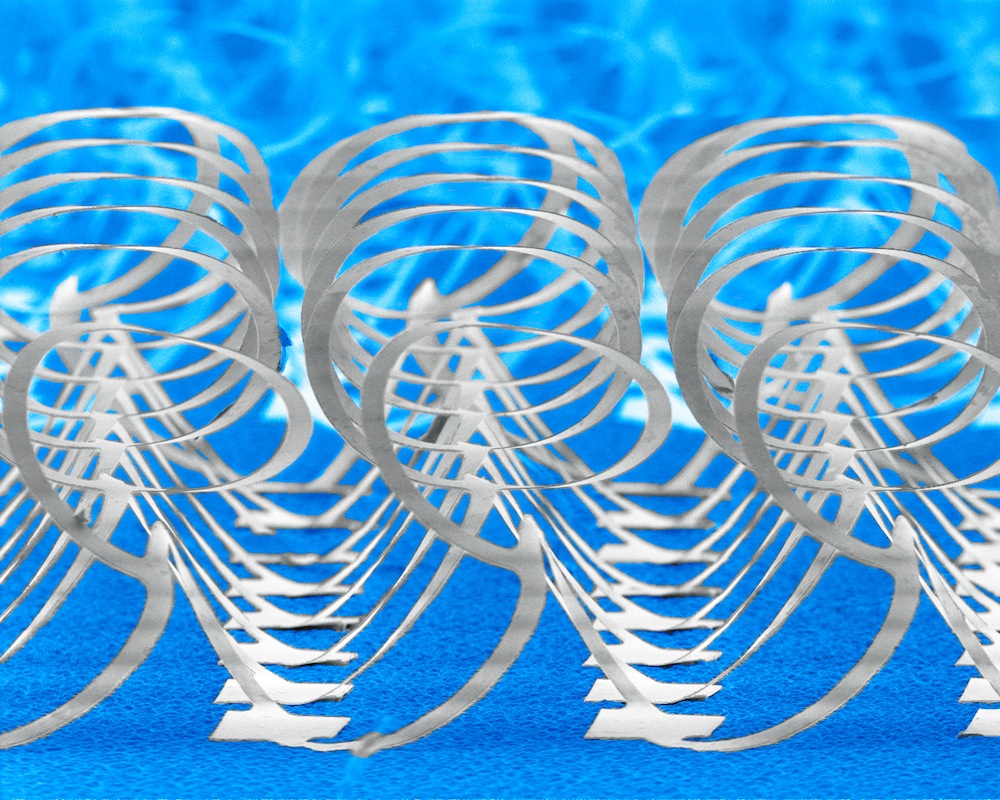'Pop-Up' 3D Structures Can Mimic Brain Circuits

By mimicking children's pop-up books, scientists can now make complex microscopic 3D shapes that model brain circuitry and blood vessels, researchers say.
These intricate structures, which could resemble tiny flowers and peacocks, may one day help scientists electronically control living tissue, the researchers added.
Naturally curved, thin and flexible 3D structures are common in biology; examples include the circuits of brain cells and networks of veins. Materials scientist John Rogers, at the University of Illinois at Urbana-Champaign, and his colleagues want to create similarly complex devices that can wrap around these biological structures, potentially supporting or improving their function. [5 Crazy Technologies That Are Revolutionizing Biotech]
"Our focus has been on the brain, heart and skin," Rogers said.
Devices that mimic the complex structures found in nature are very difficult to manufacture on microscopic scales. But now, Rogers and his colleagues have developed a simple strategy for such manufacture that involves flat 2D structures that pop up into 3D shapes.
"The analogy would be children's pop-up books," Rogers told Live Science.
To manufacture these structures, the scientists fabricate 2D patterns of ribbons on stretched elastic silicone rubber. In experiments, the ribbons were as small as 100 nanometers wide, or about 1,000 times thinner than the average human hair, and could be made from a variety of materials, including silicon and nickel.
Sign up for the Live Science daily newsletter now
Get the world’s most fascinating discoveries delivered straight to your inbox.
The 2D patterns are designed so that there are both strong and weak points of stickiness between the patterns and the silicone rubber they sit on. After the scientists fabricate the 2D designs, they release the tension on the silicone rubber. The weak points of stickiness break away, "and up pops a 3D structure," study co-author Yonggang Huang, a professor of mechanical engineering at Northwestern University in Evanston, Illinois, said in a statement. "In just one shot, you get your structure."
The researchers generated more than 40 different geometric designs, from single and multiple spirals and rings to spherical baskets, cubical boxes, peacocks, flowers, tents, tables and starfish. Scientists could even arrange patterns with multiple layers, a bit like multi-floor buildings.
This new pop-up technique has many advantages, the investigators said. The strategy is fast, inexpensive and can employ many different materials used in electronics today to build a wide variety of microscopic structures. Moreover, researchers can build many different structures at one time, and incorporate different materials into hybrid structures.
"We are excited about the fact that these simple ideas and schemes provide immediate paths to broad and previously inaccessible classes of 3D micro- and nano-structures in a way that is compatible with the highest-performance materials and processing techniques available," Rogers said. "We feel that the findings have potential relevance to a wide range of microsystems technologies — biomedical devices, optoelectronics, photovoltaics, 3D circuits, sensors and so on."
The scientists said their pop-up assembly technique has many advantages over 3D printers, which create 3D structures by depositing layers of material on top of one another. Although 3D printers are increasingly popular, they work slowly. In addition, it is difficult for 3D printers to build objects using more than one material, and it is nearly impossible for these printers to produce semiconductors or single crystalline metals, the researchers said.
Still, Rogers emphasized the team's new strategy is complementary to 3D printing, and is not an attempt to replace that technique.
The scientists are currently using this pop-up assembly strategy to build electronic scaffolds that can monitor and control the growth of cells in lab experiments, Rogers said. "We are also using these ideas to form helical, springy metal interconnect coils and antennas for soft electronic devices designed to integrate with the human body," he said.
The scientists detailed their findings online today (Jan. 8) in the journal Science.
Follow Live Science @livescience, Facebook & Google+. Originally published on Live Science.










